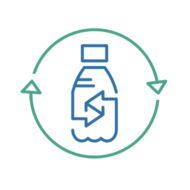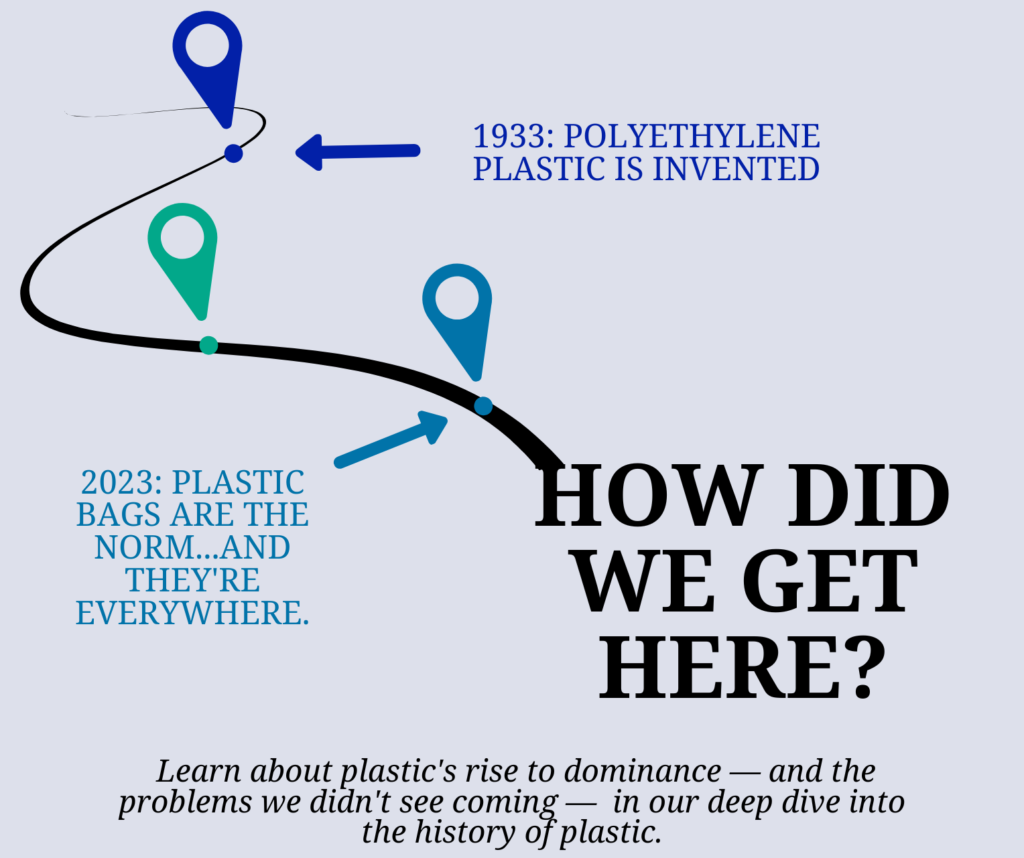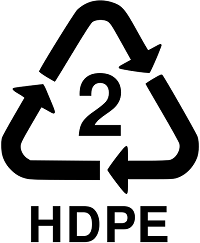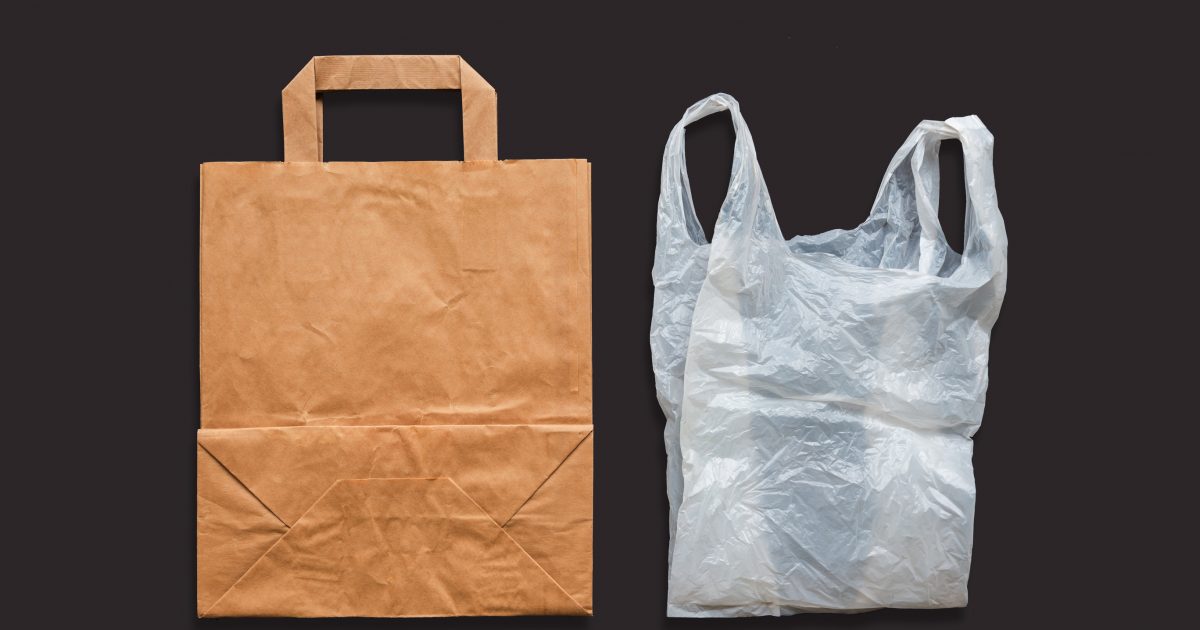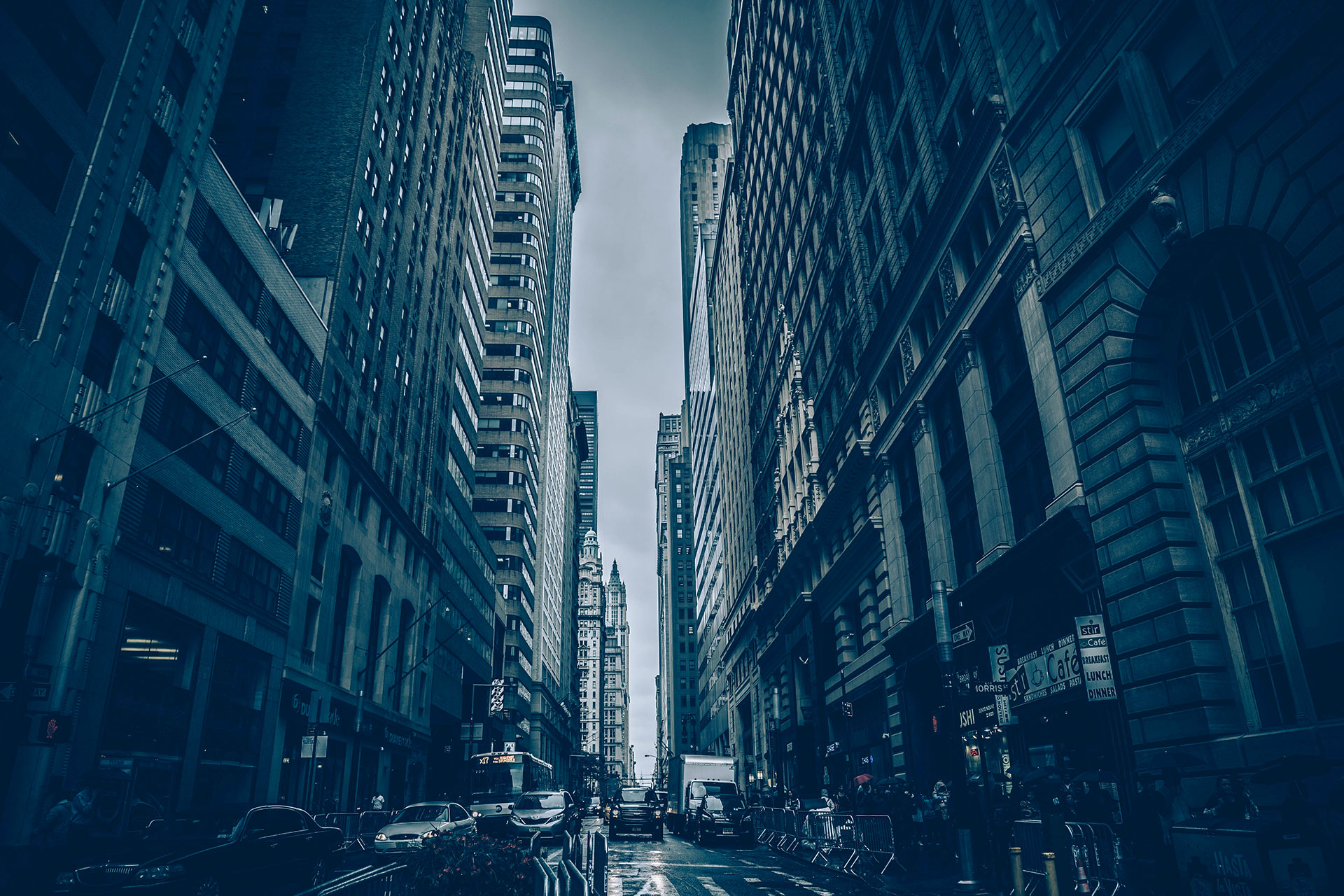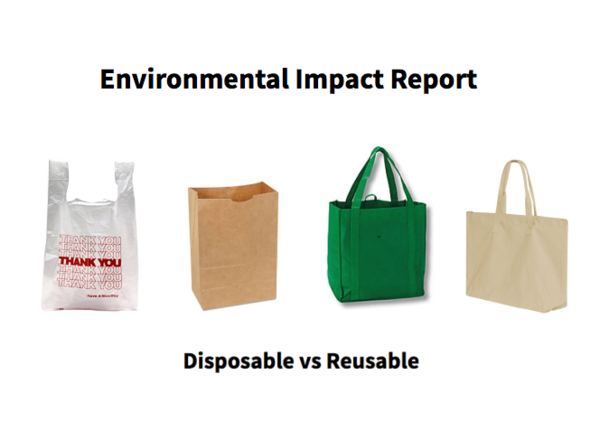
Is investing in a reusable bag really going to lower your environmental footprint?
In this post I will answer three main questions:
- What’s the environmental impact of disposable bags?
- What’s the environmental impact of reusable bags?
- When are reusable bags better than disposable bags?
The basics of comparing disposable bags vs reusable bags
Before answering any questions it’s important to understand why this is even a debate. Varying opinions on whether single use plastic bags are worse or better for the environment than reusable alternatives stem from unfair comparisons.
A few reasons why people may be comparing apples to oranges:
- Types – different types of disposable bags have varying impacts. There are many variations of both paper and plastic bags. There is even more variation in reusable bags. This makes it difficult to make blanket statements like “all disposable bags are worse than reusable alternatives”
- Focus – depending on which aspect of environmental impact you’re focusing on, the results can vary. Energy use, natural resource use, pollution, and emissions, are just a few of the different areas you can compare. To understand the full cost, you have to consider the complete environmental impact of disposable vs reusable, not just one aspect.
- Other – Other variables such as the technology used to manufacture the bag or how far it traveled to get the point of sale also changes the environmental impact.
They key indicators of environmental impact
There are several variables to compare when it comes to rating the overall environmental impact of bags. Here are the main 3 areas and some of the considerations of each:
- Production – What is the impact of producing one bag
- Energy input
- Natural resource use
- Transportation
- Emissions from manufacturing
- Use – How use of the product impacts humans or the environment
- Impact on human health
- Lifespan of the product
- Environmental impact of use (if any)
- Post Use – How disposal of the product impacts the environment
- Pollution of natural environment
- Emissions from disposal (gasses from breakdown in landfill or incineration)
- Cost of recycling
The total impact of a product can be calculated using our simplified formula:
Total Environmental Impact = Cost of Production + Cost of Use + Cost of Disposal
The hot button environmental issues for bags
There are several different types of environmental impacts to consider. Some may be more important to you than others.
The most common types of environmental impact from products like bags include:
Emissions – global warming, air pollution
Natural Resource Use – deforestation, biodiversity loss, global warming
Pollution – biodiversity loss, degradation of natural environment
Some people may weight one factor as more important than another depending on their opinions of which environmental issue is most pressing.
The most common comparison for environmental impact is the product’s overall ‘carbon footprint’ which measures how much it contributes to global warming.
We’ve studied the impact of various types of grocery bags. Here’s what we found…
Defining Different Types of Bags
We’ve grouped types of grocery bags into two categories: disposable and reusable.
Disposable Bags
Basic Plastic (HDPE) – High Density Polyethylene – this is the lightweight single-use plastic bags you find at almost every grocery store.

Paper – Paper bags are less common than plastic bags but can still be found in some stores. They are the original “disposable” bag and are intended for single use.
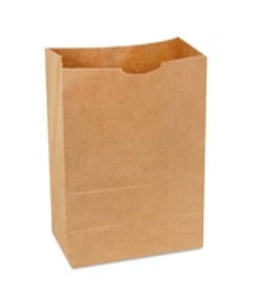
Reusable Bags
Cotton – These bags are often referred to as “totes”. They are woven from cotton and are build to be reused many times.
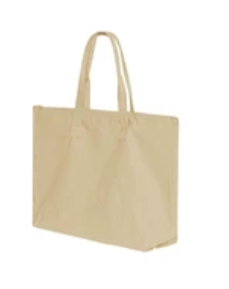
Polypropylene – This is one of the most common types of reusable bags now being distributed by retailers. Made from a more durable plastic than the HDPE bag, this reusable bag is build to be reused many times and often has a rigid insert in the bottom for added strength.

THE ENVIRONMENTAL COSTS: DISPOSABLE VS REUSABLE
How do these different types of bags stack up?
A lifecycle analysis study conducted by the UK government that assessed the life cycle of these various types of bags provides some of the best data we have.
In this study they assessed the following aspects of each bag’s life:
- Extraction and production of raw materials
- The production process
- Transportation to final destination
- End of life – collection, landfill, incineration, etc.
- Avoided products and recycling – the avoidance of virigin materials through secondary reuse or recycling
The results of this study is a comparison of the global warming potential (GWP) also referred to as the ‘carbon footprint’ for each type of bag.
Impact of Different Types of Bags
The environmental impact of 1 bag when looking at the total life.

Note: Cotton bags are not included in this graph. The study states that the global warming potential of cotton bags is more than 10 times the impact of any other bag.The Results:
Reusable bags require more material and more energy input than disposable bags which gives them a bigger environmental footprint when comparing them 1 to 1.
For 1 bag we can see that the standard disposable bags (HDPE) has the lowest impact.
But since the average person uses hundreds of plastic bags every year, we have to consider how many plastic or paper bags you displace by using a reusable bag.
Breakeven Uses: Disposables vs Reusable
When does a reusable bag become more environmentally friendly than a disposable bag?
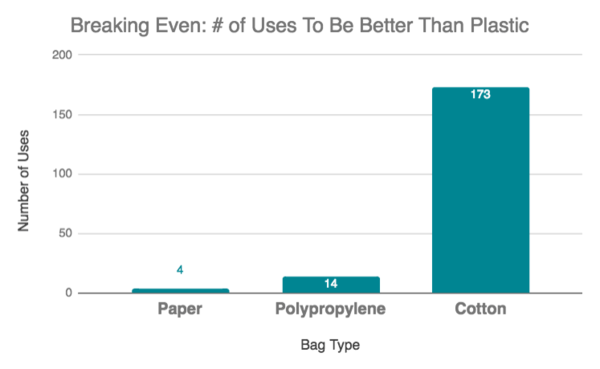
To be more eco-friendly than a disposable plastic bag you would need to use these alternatives this many times:
Paper Bags: 4 Times
Polypropylenes: 14 Times
Cotton: 173 Times
Clearly, the more you reuse a bag, the lower its environmental impact.
Knowing this ‘breakeven’ number is important because it will help you to truly reduce your environmental impact.
Other Important Considerations
There are many variables to consider when trying to reduce your environmental impact that can effect your decisions.
Reusing Disposable Bags
When you reuse plastic bags multiple times (even if you use them as a trashcan liner) that will bring down their environmental impact. While the study we summarized in this article does take reusing and recycling into consideration, it’s important to for you to know that when you do not have the option to turn down plastic bags, reusing them is the best way to reduce their impact.
Other Materials
As this study proves, not all bags are made equal. If you can use repurposed or recycled materials to make your own tote, you will reduce your carbon footprint even more.
Using virgin materials will almost always have a larger impact on repurposing existing materials. Before you buy a reusable bag you may want to see if you already have a worthy substitute at home, or if you have a friend who already has too many…
Too Many Bags?
Reusable bags are becoming more popular and many brands give them out for free as promotional items. If you start to accumulate reusable bags you can actually increase your environmental impact.
Remember that the best way to reduce your impact is to use less and reuse as often as possible.
Key Takeaways
Producing 1 plastic bag has a relatively low environmental impact. The impact of this type of disposable bag comes from using so many of them.
Paper bags are only more eco friendly when reused 4 times or more.
Polypropylene bags are a good choice when considering a reusable alternative. After only 14 uses this bag is already more eco friendly than conventional plastic bags.
Cotton bags have a surprisingly high environmental impact because of the effort that goes into growing cotton and producing the bags. If you can keep this bag for a long time, it will be more eco friendly than plastic bags, but it requires over 173 uses to break even.
The more times you use a bag, the more environmentally friendly it becomes. Take care of your bags and don’t accumulate more than you need.
Learn more about the plastic problem and how we can solve it:
